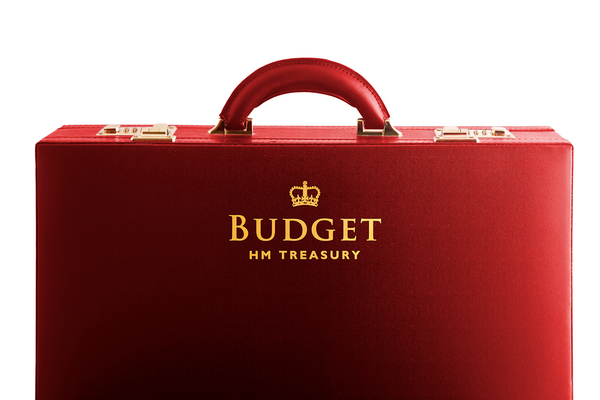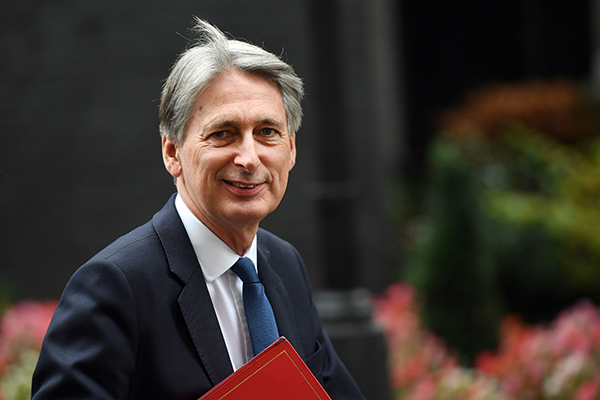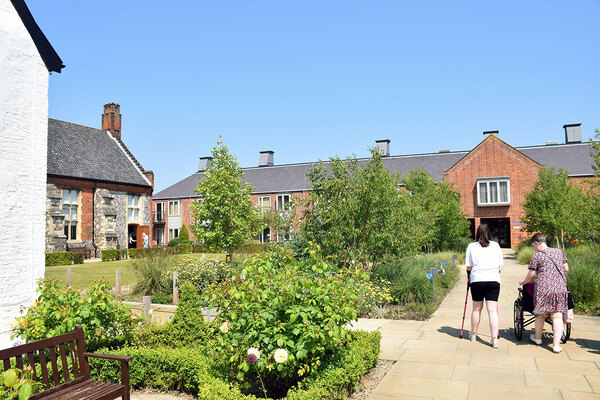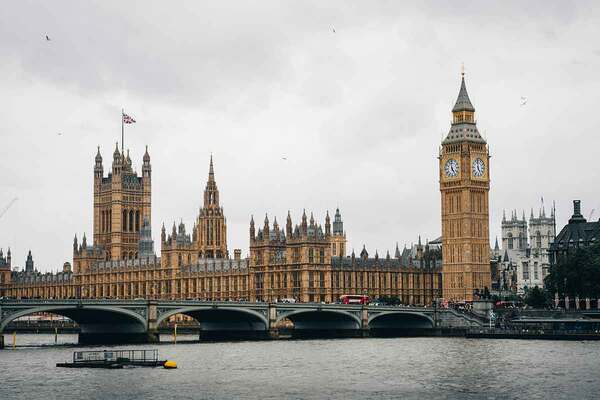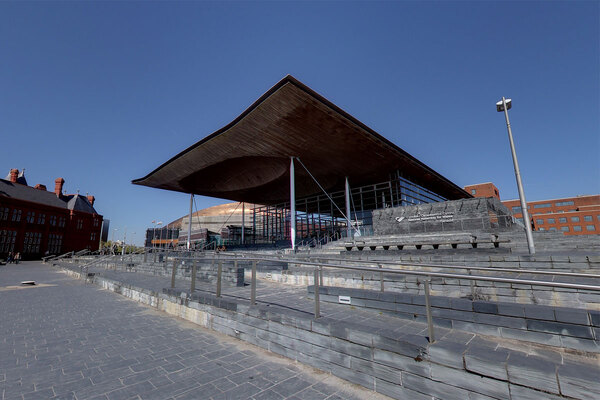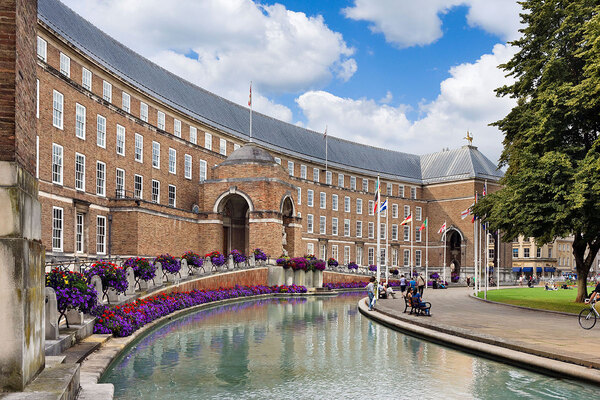 Jules Birch
Jules BirchA look ahead to the Budget part two: investment
In the second part of his pre-Budget blog, Jules Birch looks at whether the government is likely to be bold on housing investment
In normal times, a chancellor who pledged an extra £2bn for social housing and an extra £10bn for homeownership might to be greeted with general acclaim.
But these are not normal times and the pressure to do something big and bold on housing was such that what might have been two key Budget commitments (plus the new rent settlement as a third) were announced last month at the Conservative Party conference.
And, far from being applauded, the government came under fire for doing too little, too late on social housing and for pouring petrol on the flames of house price inflation via Help to Buy.
Philip Hammond was not helped by a curious Conservative briefing to journalists that the £2bn would only be enough for 25,000 homes but even Tory newspapers were checking house builder share prices on the day after the budget for Help to Buy was doubled.
This second part of my three-part blog previewing a watershed Budget for housing looks at the prospects for further moves on investment on 22 November. The first part looked at land, and part three (coming soon) will look at tax and welfare.
“Does anyone really believe that Philip Hammond will spend more?”
Conventional wisdom would say there aren’t any prospects – and to read the small print of the Budget documents to check whether the £2bn really is new money.
Even if it is new, does anyone really believe that Philip Hammond will spend more when he has so many issues clamouring for his attention and revised Office for Budget Responsibility forecasts may mean he has less money to play with than it seemed at the last Budget?
But it is noticeable that the clamouring is not just coming from the usual suspects but also from investment bankers, right-wing thinktanks and Conservative MPs.
At issue is a fundamental question: should the chancellor abandon George Osborne’s approach to austerity and be prepared to borrow to invest?
“The clamouring is not just coming from the usual suspects but also from investment bankers, right-wing thinktanks and Conservative MPs.”
Yes, says former communities minister Nick Boles in a new book – the deficit has been brought down and austerity is over. Now is the time for a Grenfell Housing Commission to build 50,000 affordable homes a year funded by bonds giving savers a tax-free return.
Yes, says commentator Peter Franklin on Conservative Home – we need “a ‘Marshall Plan’ to bring homeownership to an excluded generation” including a comprehensive review of land taxation and a National Land Bank.
Sort of, says Brexit-supporting economist Andrew Lilico, but we should turn local government pension schemes into British sovereign wealth funds to create a source of investment.
Some within government agree. Communities secretary Sajid Javid took the unusual step of going public with a call to the chancellor to take advantage of low interest rates to borrow to invest in new homes.
Reports suggested he was lobbying the Treasury to underwrite a £100bn plan to build half a million Rent to Buy homes over the next decade.
The idea was based on proposals drawn by the Respublica thinktank for a £10bn-a-year National Housing Fund that could ensure the construction of at least 40,000 to 75,000 homes a year (depending on where they are built).
The basic idea was to develop homes that could be let at market rents on five-year tenancies. However, this could be adapted to include homes for social rent or to give tenants an option to buy at today’s price at the end of the tenancy.
Government could use its ability to borrow at historically low interest rates but create a financial instrument so that the debt does not contribute to the deficit.
The outcomes would not just be many more new homes, but 180,000 new construction jobs and boost flagging capacity in the industry via support for small and medium-sized firms.
“It’s not hard to see innate Treasury caution getting in the way of plans to go big and bold on investment.”
The fund would grow in value as rents more than covered interest payments and economic analysis by JLL suggested that the public finances would benefit by up to £3.6bn in increased receipts from income tax, national insurance, council tax and stamp duty and reduced spending on unemployment benefits.
Put like that, or in a £50bn version of a similar idea, what’s not to like? Except that when Mr Hammond was asked about the plan in the Commons he said it was not government policy.
It’s certainly not hard to see innate Treasury caution getting in the way of plans to go big and bold on investment – even though it’s just found another £10bn for Help to Buy.
That could increase the temptation to look at some of the more radical ideas being floated on land reform that I covered in the first part of this series.
A reminder of what Theresa May announced at the Conservative Party conference last month
Another option for the chancellor, says Torsten Bell of the Resolution Foundation, would be to change his fiscal rules to create an exception for investment in housing.
As he points out, that investment is desperately needed: the affordable housing supply figures last week showed a 27% increase in completions to 41,530 in 2016/17 but only 5,380 of these were for social rent.
Contrast that with the peak of Labour’s National Affordable Homes Programme in 2010/11, when completions totalled 61,090 with 39,560 for social rent.
The cuts in investment made in 2010 have led directly to the shortfall in affordable homes now. Torsten Bell estimates that it would take another £3bn (on top of the £2bn) to restore the current programme to those levels.
Meanwhile Sadiq Khan is calling for an extra £1bn for London alone to restore funding to 2009/10 levels.
However, new homes are not the only item on the investment agenda that are clamouring for Hammond’s attention.
One positive sign is that he is said to be considering plans to fund extra training for the building workers that will be so badly needed to build more homes – and replace the EU workers who could stop coming after Brexit.
“It’s hard to remember the run-up to a Budget with such raised expectations.”
So far the government has sought to pass responsibility to social landlords for fire safety improvements in the wake of Grenfell. Labour leader Jeremy Corbyn has called for £1bn for sprinklers in the Budget.
There are the usual calls for a relaxation of borrowing restrictions on council housing and the Local Government Association is also urging the chancellor to change the rules to allow councils to keep 100% (rather than 30%) of the receipts to allow them to build replacements.
And will zombie policies like Starter Homes, the extension of the Right to Buy and the forced levy on high-value council homes be reanimated or finally put out of their misery?
It’s hard to remember the run-up to a Budget with such raised expectations – or so much potential for them to be dashed.
Will it be big and bold or tame and timid on investment on 22 November?
Jules Birch, award-winning blogger
